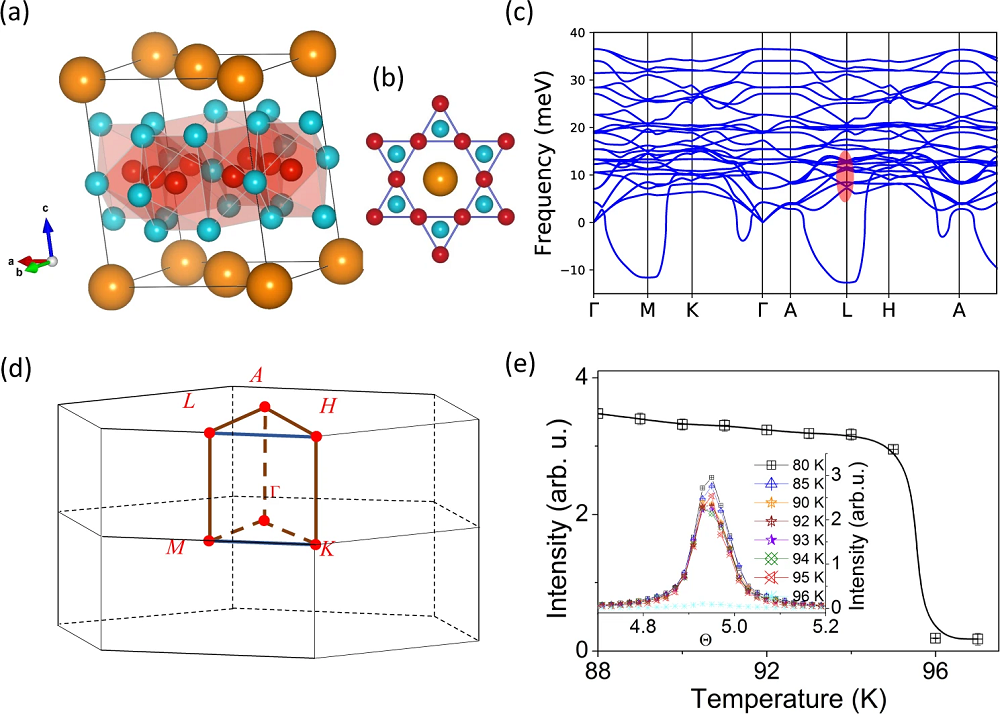The enigmatic charge order of kagome (Cs,Rb)V3Sb5
The intricate relationship between lattice geometry and topological electronic behaviour determines the ground state properties of materials. The non-trivial band topology of the kagome lattice – it consists of the vertices and edges of the trihexagonal tiling – is being extensively explored as candidates to engineer Dirac fermions, topological flat bands, magnetic Weyl semimetals or quantum spin liquid behaviour. Besides, the combination between the non-trivial topology and strong electronic correlations, originated from the interplay of orbital, charge and spin degrees of freedom, introduces topological correlated physics with more exotic phenomena, like topological Majorana modes.
Recently, a new family of non-magnetic kagome metals AV3Sb5 (A = K, Rb, Cs) has emerged as a fertile playground to investigate correlation-driven topological phases. Derived from the kagome structure, this family of materials features a quasi 2D electronic band structure. Superconductivity sets in at low temperature and is intertwined with an exotic charge density wave phase (CDW). Although the electronic structure obtained from density functional theory calculations is well established, controversy surrounds the origin and stabilization of the CDW, and the mechanism of superconductivity.

The rich phase diagram of the kagome lattice has been investigated with respect to Fermi surface instabilities within the Hubbard model, revealing spin and CDW orders and unconventional superconductivity emerging upon tuning the band filling. From the thermodynamic point of view, specific heat measurements show a small release of entropy through the CDW transition, suggesting a first order phase transition, and tight binding models describe the CDW as electronically mediated. ARPES data have reported deviations from the linear electronic dispersion, providing that the electron-phonon coupling gives sufficient strength for the CDW formation. Finally, in addition to the enigmatic driving force of the CDW, the different energy scales hinder a detailed study of the ground state of AV3Sb5. Consequently, the origin and stabilization of the CDW phase transition remains unclear.
Now, a team of researchers combines D. Subires, A. Korshunov, A. H. Said, L. Sánchez, Brenden R. Ortiz, Stephen D. Wilson, A. Bosak & S. Blanco-Canosa (2023) Order-disorder charge density wave instability in the kagome metal (Cs,Rb) V3Sb5Nature Communications doi: 10.1038/s41467-023-36668-w diffuse and inelastic x-ray scattering to identify a 3-dimensional precursor of the charge order at the L point that condenses into a CDW through a first order phase transition.
The results point to the situation where the Fermi surface instability at the L point is of order-disorder type with critical growth of quasi-static domains. The experimental data indicate that the CDW consists on an alternating Star of David and trihexagonal distortions and its dynamics goes beyond the classical weak-coupling scenario.
These results present a step forward and provide crucial information to understand the enigmatic charge order of (Cs,Rb)V3Sb5.
Author: César Tomé López is a science writer and the editor of Mapping Ignorance
Disclaimer: Parts of this article may have been copied verbatim or almost verbatim from the referenced research paper/s.